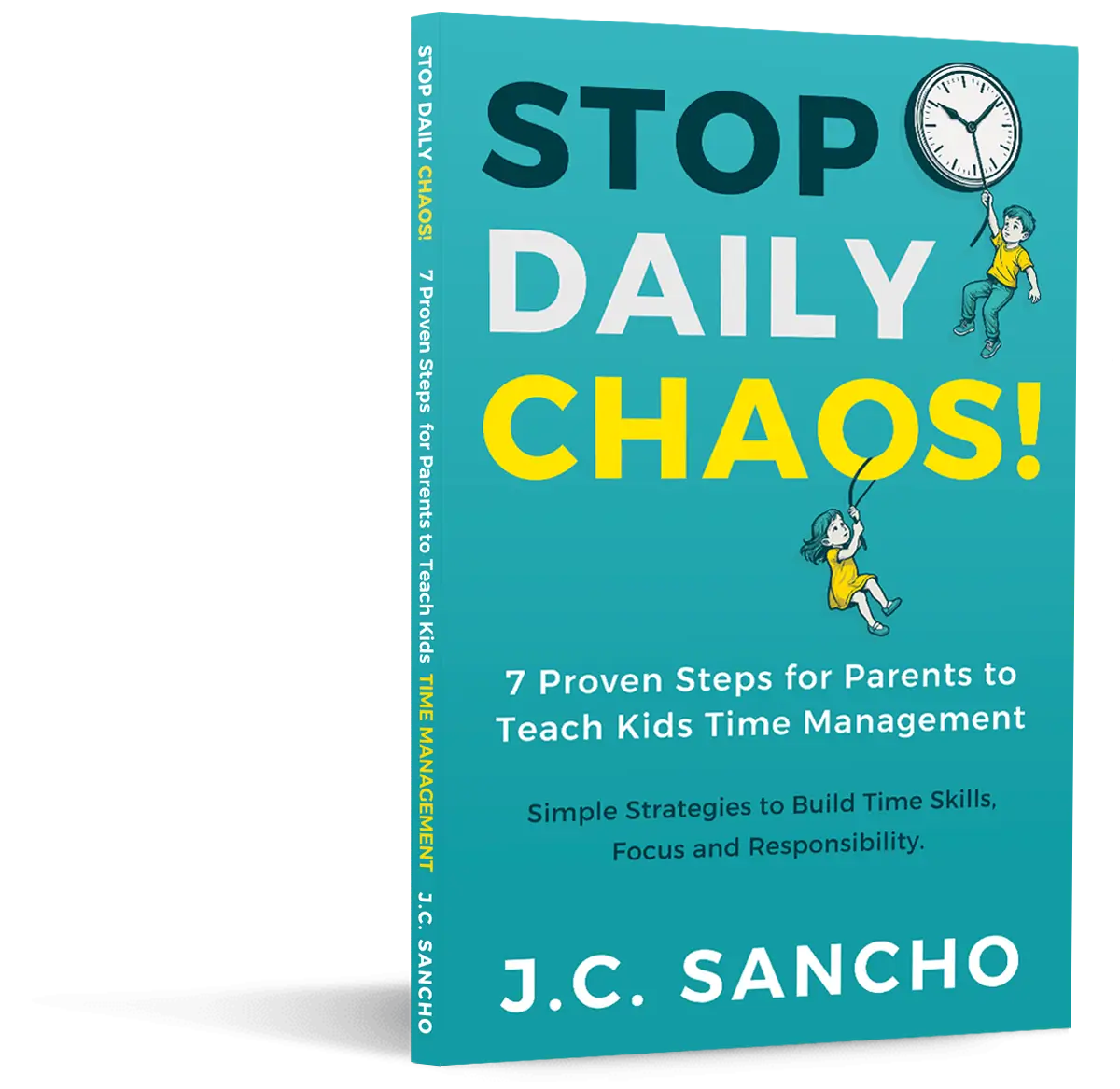Morning routines often follow a predictable rhythm: breakfast, backpacks, shoes, and the walk to the car or bus stop. But for some families, this rhythm breaks down the moment school enters the picture. A child freezes, cries, complains of stomach pain, or clings to a parent with unwavering panic. What looks like refusal or defiance is often something deeper. School refusal is a complex emotional challenge that disrupts learning, stresses families, and leaves many parents unsure how to respond.
This guide explains the roots of school refusal, outlines effective strategies, and gives parents a clear plan for supporting their child with confidence and compassion. With the right approach, you can rebuild trust, reduce anxiety, and help your child return to school with greater security.
What School Refusal Really Means
School refusal is more than morning complaints or occasional reluctance. It describes a persistent pattern of emotional distress connected to attending school. Children who experience school refusal often show intense fear in the hours leading up to school, and the distress can escalate into physical symptoms such as nausea, headaches, trembling, or stomach pain. These reactions are genuine responses to anxiety, not attempts at manipulation.
School refusal differs from truancy. Truant children avoid school to seek unsupervised social opportunities. Children with school refusal want to attend but feel emotionally overwhelmed by the thought of it. The source of this overwhelm varies widely and often involves several overlapping factors.
Why Addressing School Refusal Matters
School plays a critical role in a child’s emotional, social, and academic development. When school refusal persists, several problems follow. Academic progress slows. Social confidence drops. Avoidance patterns deepen. Stress builds within the entire family system. The earlier school refusal is identified and addressed, the easier it becomes to support your child back into a consistent school routine.
Long-term, untreated school refusal can lead to:
- Academic gaps and falling behind peers
- Lower confidence in social interactions
- Increased general anxiety
- Difficulty transitioning to new environments
- Strained family relationships
Understanding the underlying cause is the first step toward reversing this pattern and creating a more supportive school experience.
The Root Causes Behind School Refusal
School refusal rarely stems from a single issue. Instead, several factors often interact at once. Below are common underlying causes that bring clarity to your child’s experience.
Anxiety About Separation
Some children fear being away from a parent or primary caregiver. Even older children can experience separation anxiety when routines shift or stress increases at home.
Social Anxiety
School requires constant interaction — with teachers, peers, groups, and unfamiliar situations. Children who fear embarrassment or judgment often struggle to enter these environments.
Academic Stress
Children who feel behind, overwhelmed, or ashamed of their abilities may fear school because it reminds them of these challenges. They may hide these struggles beneath physical complaints.
Bullying or Peer Conflict
Bullying, exclusion, or ongoing conflict with classmates is one of the strongest predictors of school refusal. Children often fear reporting these issues because they fear retaliation or disbelief.
Learning Differences
Children with undiagnosed dyslexia, ADHD, dyscalculia, or processing disorders often experience frustration, exhaustion, or embarrassment in the classroom. Avoidance becomes a protective response.
Perfectionism or High Self-Imposed Standards
Some children fear making mistakes or not meeting their own internal expectations. They avoid school to avoid perceived failure.
Change or Major Life Stressors
Events such as divorce, relocation, illness, or new siblings can destabilize a child’s emotional world. School becomes another stressor rather than a source of stability.
Each cause requires its own targeted approach. Parents often uncover the root cause through curiosity, empathy, and consistent communication rather than assuming the motivation behind the refusal.
Strategies to Support a Child Experiencing School Refusal
A supportive plan blends emotional support, communication, structure, and collaboration. Below are strategies that help children return to school with confidence rather than pressure.
Listen Without Judgment
A child’s distress may spill out as frustration, anger, or silence. Your first job is to create safety. Encourage your child to share their fears and experiences at their own pace. Your calm presence communicates that their feelings matter, even when you don’t yet know the cause.
Useful phrases include:
- “You’re safe. I’m here with you.”
- “Help me understand what feels hard right now.”
- “Your feelings make sense. We’ll figure this out together.”
Children open up more when they feel heard rather than questioned.
Identify Specific Fears
Ask targeted questions once your child feels grounded. Instead of “Why don’t you want to go?”, try:
- “What part of the school day feels hardest?”
- “When did school start feeling difficult?”
- “Is there a moment during the day you wish you could change?”
The goal is clarity, not pressure. Even partial answers help uncover patterns.
Collaborate With Teachers and School Staff
Your child’s school team plays a crucial role in supporting successful reintegration. Schedule a meeting to share your observations and gather theirs. Teachers may spot triggers in the classroom that aren’t obvious at home.
Collaboration might include:
- Flexible morning transitions
- A safe space for emotional breaks
- Modified assignments during reintegration
- Peer support systems
- Regular check-ins with the school counselor
Strong school-home communication reduces misunderstandings and stabilizes routines.
Build Predictable Morning Routines
Anxiety thrives in uncertainty. Create a consistent morning sequence that reduces decision-making and sensory overload. Prepare clothing, backpacks, and lunches the night before. Use calm tone and clear steps so the morning feels predictable instead of chaotic.
Routines create a sense of safety that helps ease transitions.
Use Gradual Exposure Instead of Forced Attendance
Pushing a child into school while anxious often deepens fear. Instead, break the return-to-school plan into small, doable steps. Gradual exposure may include:
- Driving to the school parking lot without going inside
- Walking into the building but not staying
- Visiting the classroom after school hours
- Attending one class before going home
- Increasing time in school daily or weekly
Each step builds confidence, helping your child associate school with success instead of panic.
Validate Physical Symptoms Without Dismissing Them
Anxious children often experience real physical discomfort. Instead of “You’re fine,” try:
- “Your stomach hurts when you feel worried. Let’s breathe together.”
- “Your body is telling us something important.”
Validation reduces fear and improves a child’s ability to regulate their emotions.
Strengthen Coping Skills at Home
Teach emotional regulation tools such as:
- Deep breathing for nervous moments
- Grounding exercises using the five senses
- Visual schedules for transitions
- Calming routines before bedtime
- Drawing, journaling, or storytelling to express worries
Children gain confidence when they learn concrete tools for managing stress.
Common Pitfalls to Avoid
Even well-intentioned strategies can backfire if they reinforce avoidance or reduce communication. Watch for these patterns:
- Letting avoidance become routine — the longer a child stays home, the more difficult returning becomes.
- Using punishment — discipline does not address anxiety and can increase fear.
- Dismissing emotional distress — anxiety thrives when misunderstood.
- Solving problems for your child without collaboration — shared problem solving strengthens resilience.
- Agreeing to endless “mental health days” — occasional breaks help, but repeated avoidance slows progress.
Taking the Long View: Building Resilience and Confidence
School refusal is not a sign of weakness in your child or in your parenting. It is a communication signal — one that deserves attention, patience, and guided support. Children who overcome school refusal often develop powerful emotional resilience because they learn skills for facing fear head-on.
To support long-term progress, focus on:
- Celebrating small steps
- Encouraging problem-solving
- Using predictable routines
- Strengthening trust through consistent follow-through
- Maintaining open communication with the school
Progress rarely moves in a straight line. Expect forward steps, pauses, and occasional setbacks. What matters is steady movement toward confidence and independence.
Frequently Asked Questions
Is school refusal a phase?
Sometimes school refusal resolves quickly, but persistent patterns usually signal deeper anxiety or stress that requires attention. Early intervention prevents long-term avoidance.
Is my child trying to escape homework or responsibilities?
School refusal is almost always rooted in emotional distress rather than avoidance of work. Anxiety, bullying, learning struggles, and sensory overwhelm are common triggers.
When should I seek professional help?
If refusal lasts more than a few days, causes intense distress, or includes panic symptoms, consult a child psychologist or therapist. Professional guidance can clarify the root cause and support a tailored plan.
Can my child return to regular school routines after refusal?
Yes. With gradual exposure, consistent support, and school collaboration, children recover and build strong coping skills for the future.
Moving Forward With Clarity and Hope
School refusal can feel overwhelming at first, but you’re not navigating this alone. With empathy, structure, communication, and professional support when necessary, your child can rebuild confidence and return to school with a stronger emotional foundation. This challenge becomes a turning point — one that strengthens resilience and deepens your connection with your child.
Further Reading
- American Academy of Pediatrics – School Refusal in Children
- Child Mind Institute – Helping Kids With School Anxiety
- Mayo Clinic – School Refusal: Symptoms and Causes
This article is for educational purposes only and does not replace professional medical guidance.



